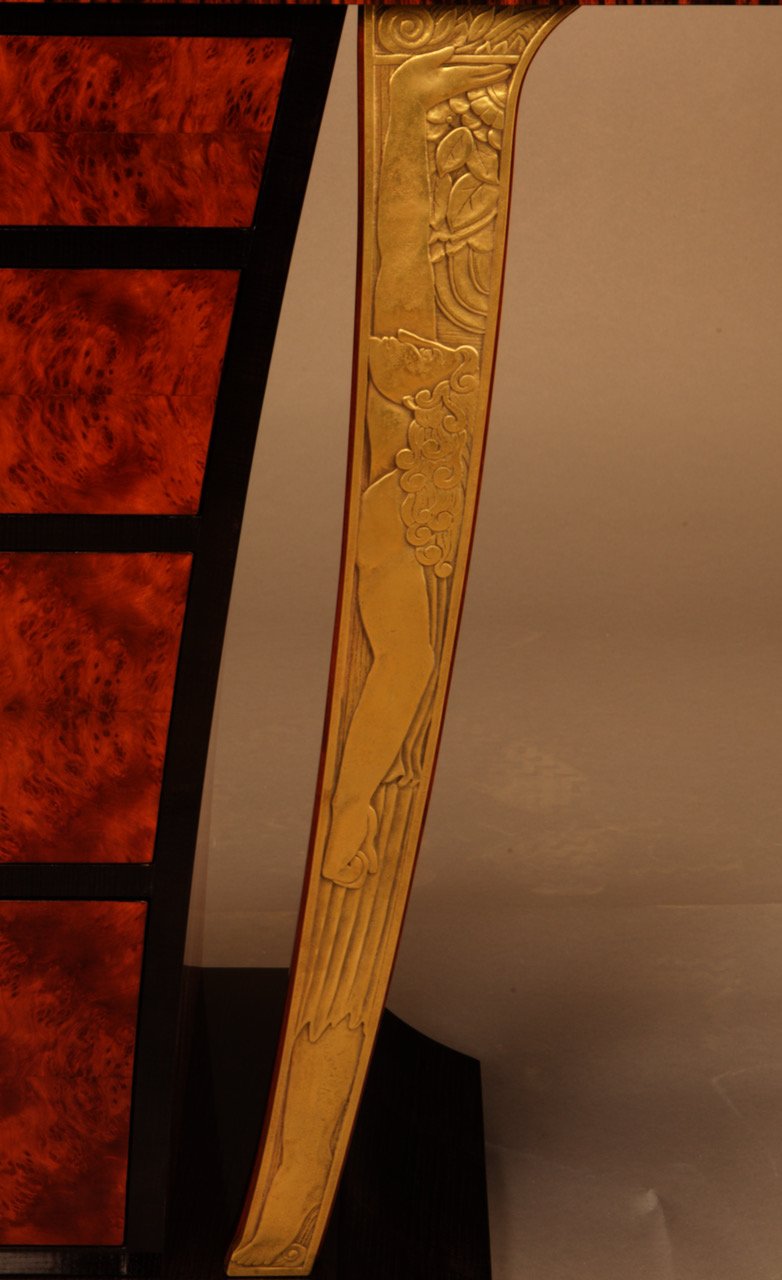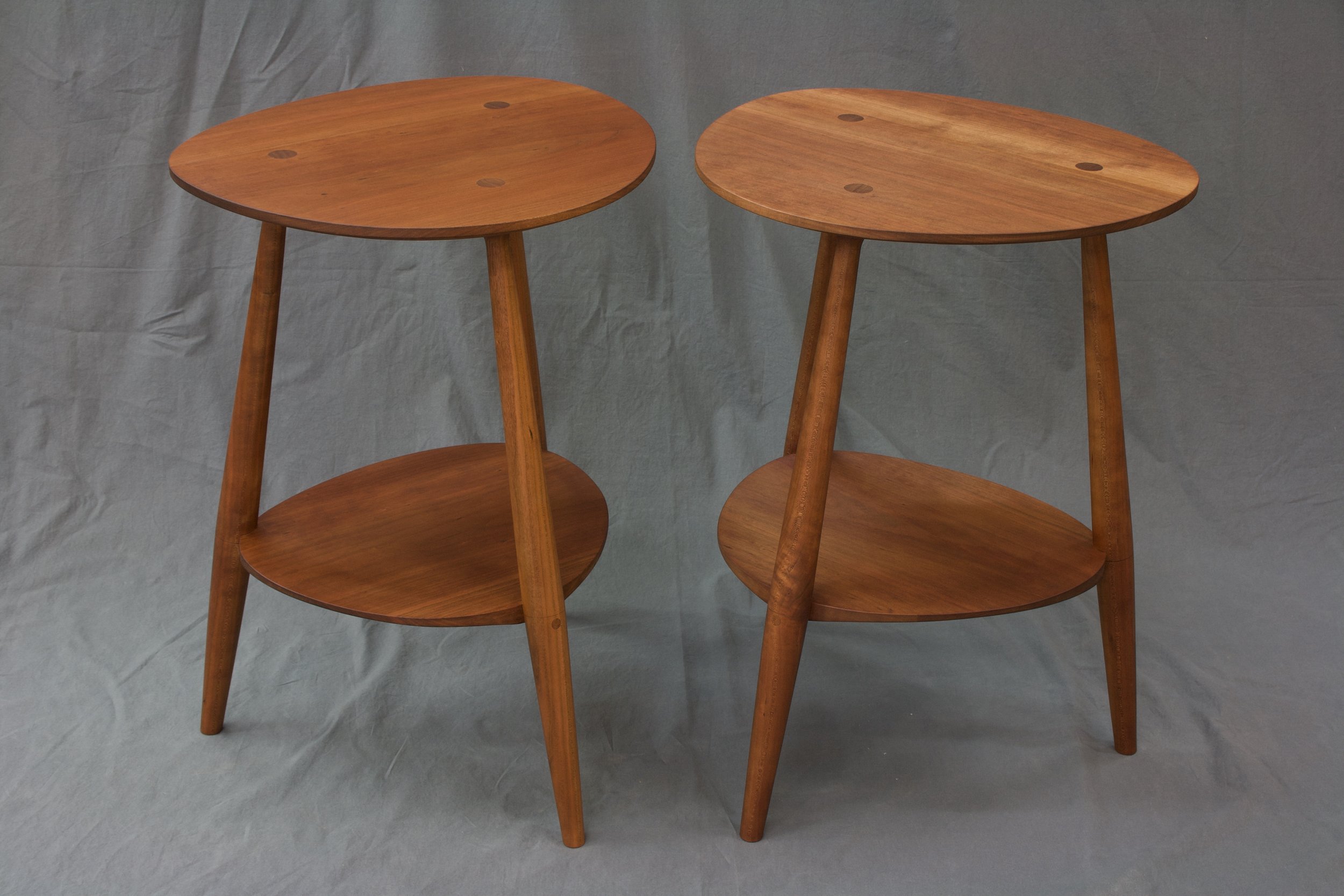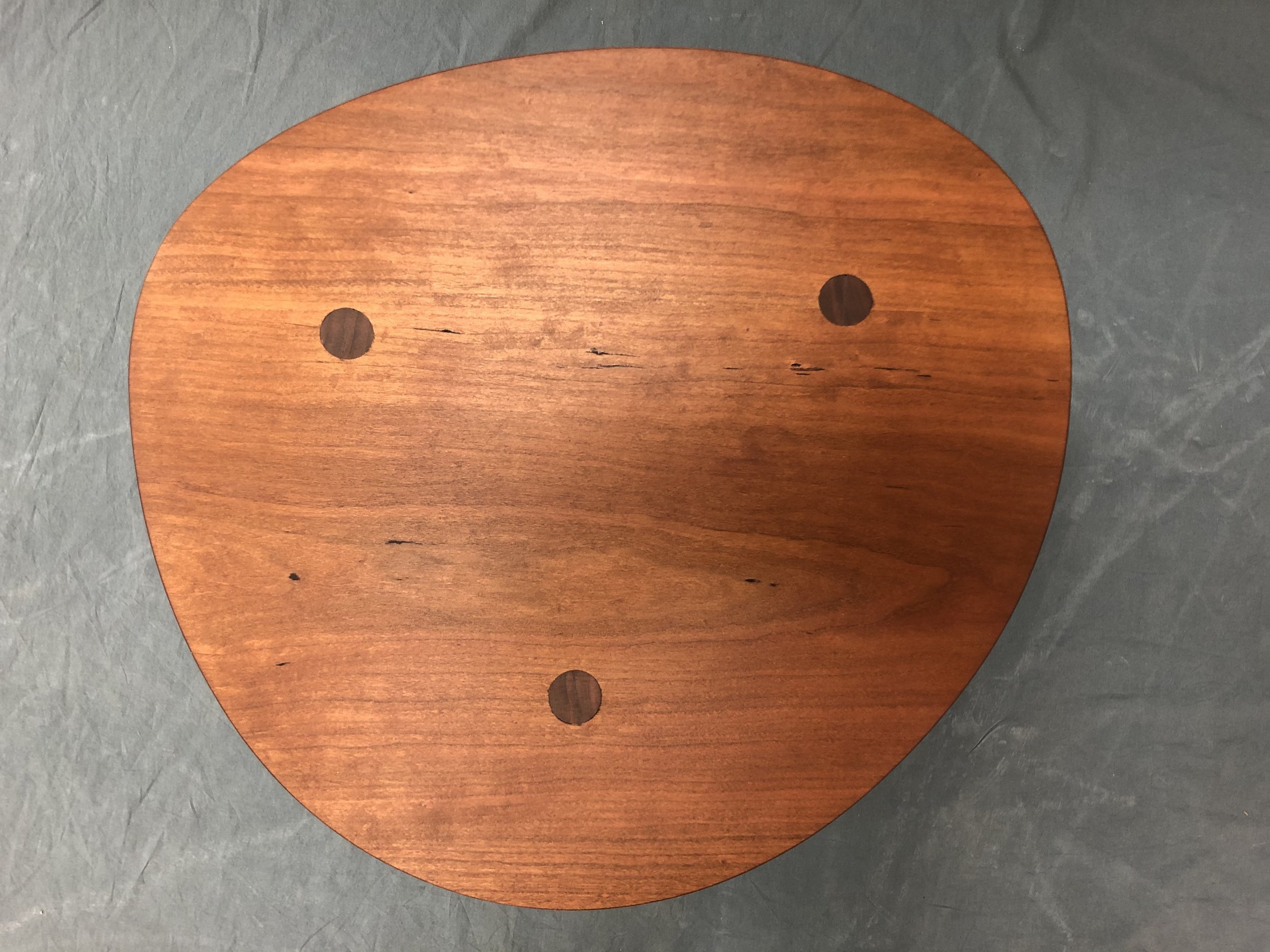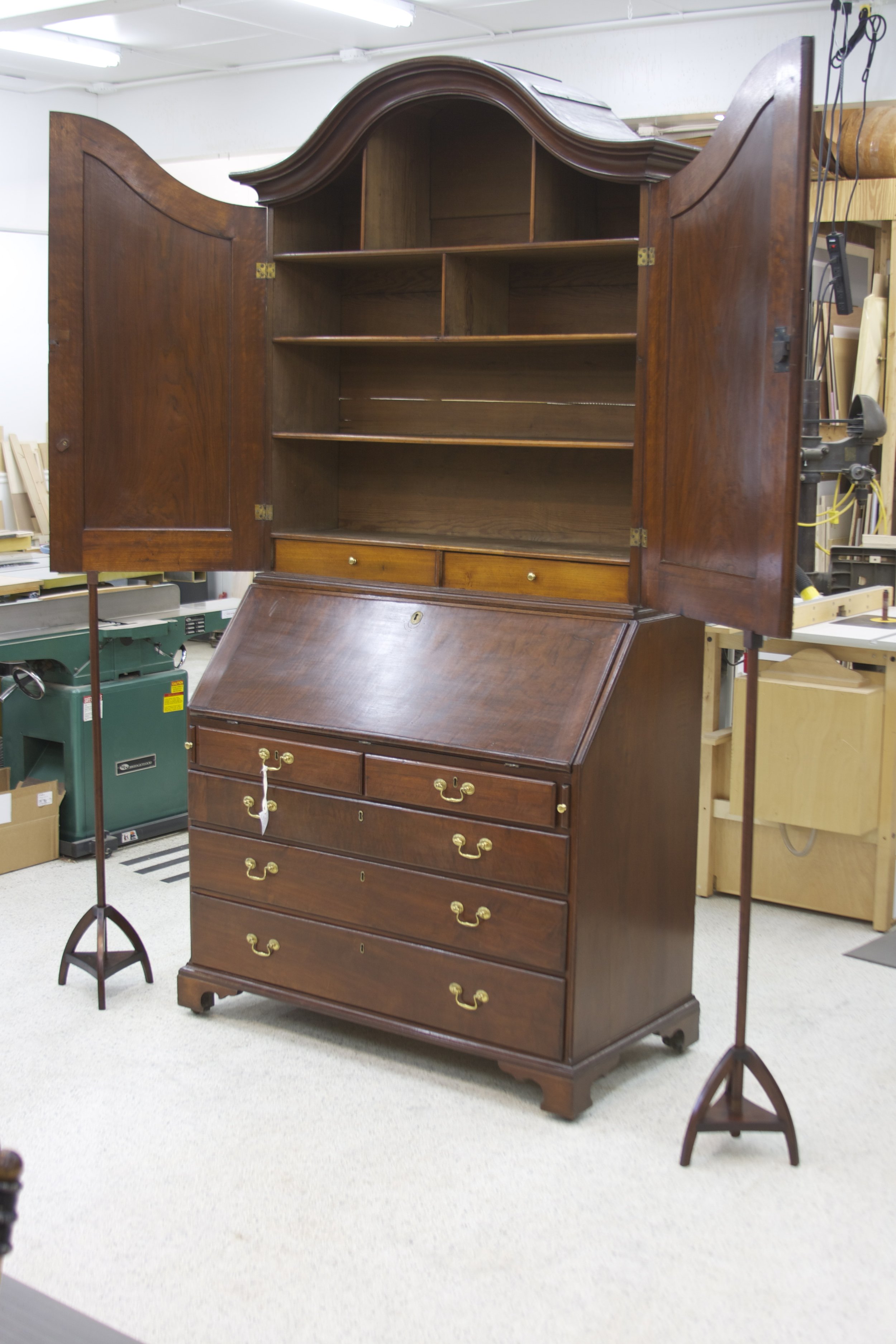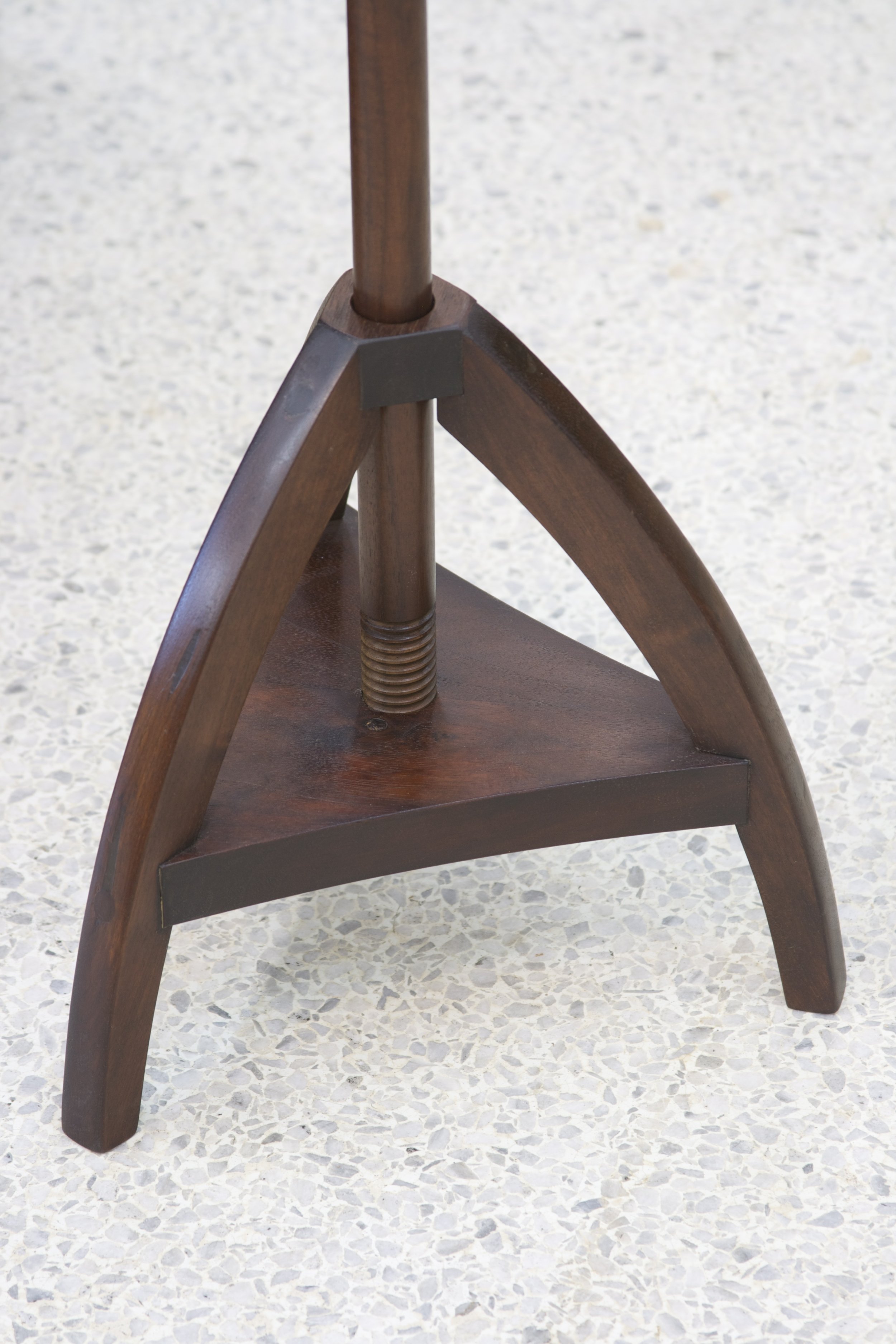Custom Furniture and Objects
When you can’t find exactly what you want, I’m here to help. I promise to deliver a level of quality and thoughtful design that comes from passion and almost 40 years of experience.
The client that commissioned this project had searched for years for a sideboard in the Art Deco style and simply couldn’t find anything. The found the image below on the internet and thought it might be incorporated into the design.
The problem was that this image did not tell us what the hands of the figure are doing, nor what the rest of the body looked like.
Artist John Stevens was able to “complete” the figure and add curvature as seen in the image (below left). (Anyone that knows John knows he possesses unfathomable superpowers)
I was then able to carve patterns in wood (middle image) that I sent to a foundry to be cast in bronze (image on right).
On the left are two inlaid walnut two tables based on the image (directly below) that a client sent me from an auction catalog. The lighter colored table has been distressed to make it appear old. The client wanted the table to be shorter and proportionally smaller than the original.
Inlaying and joining the curved spandrels to the compound angled leg and apron was the most challenging part of the this project. I enjoy making finish samples to get the color just right.
I designed and built this serving cart to hold an unusually long warming plate. It is made of Australian Lacewood.
Designed to be used in a “tiny house,” the height of this cherry table allows it to be used both as a side table and as a small dining table. Three legs prevents any rocking.
The shape of the top is inspired by one of the alphabets of lettering artist Tom Perkins.
In order to refine the dimensions, I made mock-up in salvaged styrofoam insulation board. (on left). The center table is made of yellow pine.
Heavy Door Supports
No, I did not make this Moravian desk and Bookcase!!!!!!! (although I could)
I was commissioned by MESDA (Museum of Early Southern Decorative Arts) to design and make a pair of supports for the unusually large and heavy doors so they could display the bookcase in the open position. Also, the hinges on the doors are soft brass, worn and somewhat undersized. Museum staff and I decided that the design should be in keeping with what the Moravians might have done if faced with this problem when it was originally built. I am told by the MESDA tour guides that visitors are as curious about the supports as they are about the desk. Another perfectly acceptable option would have been to design and build a support out of another material such as plexiglas so that visitors would would not confuse the supports for something original.

